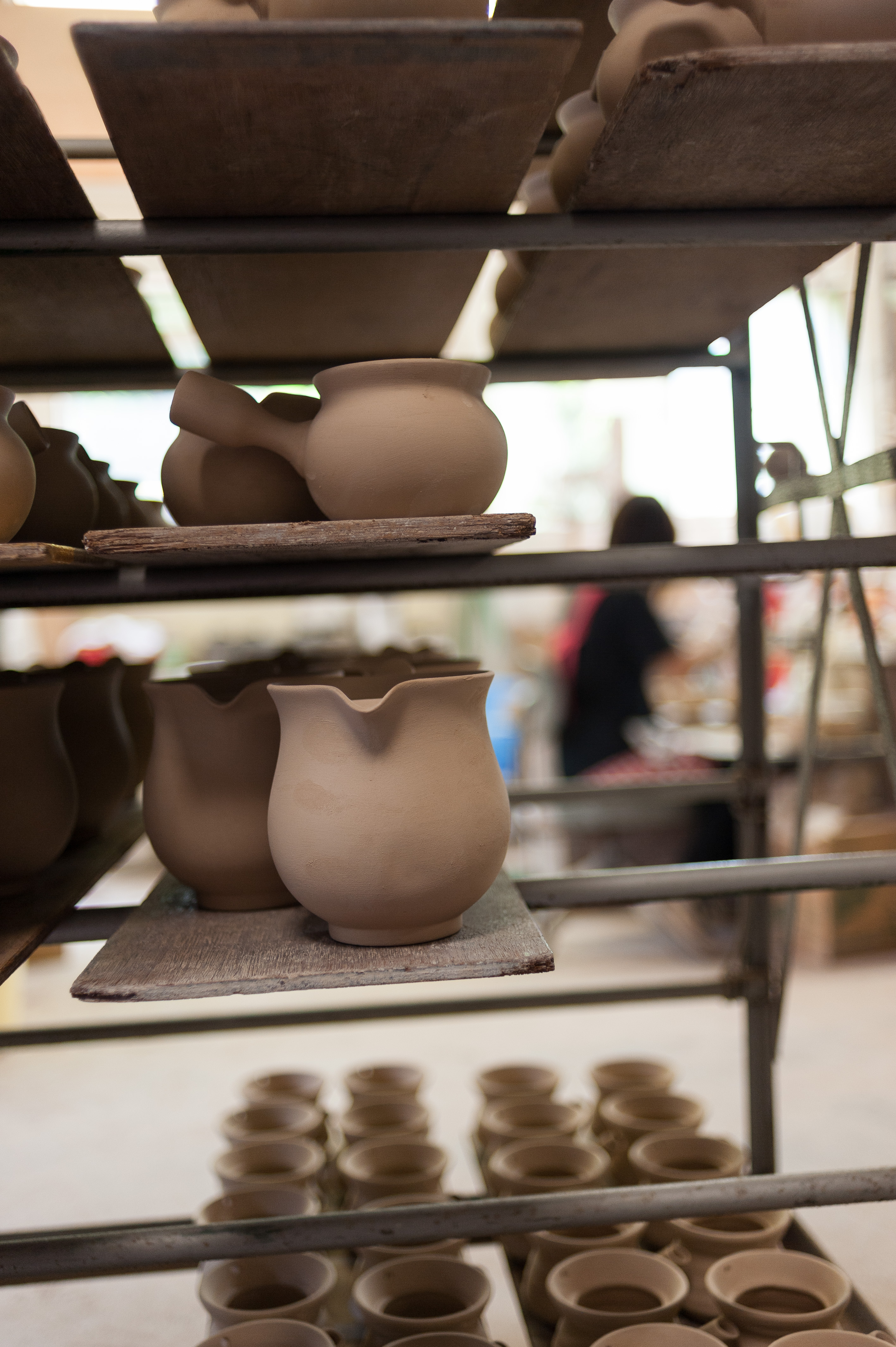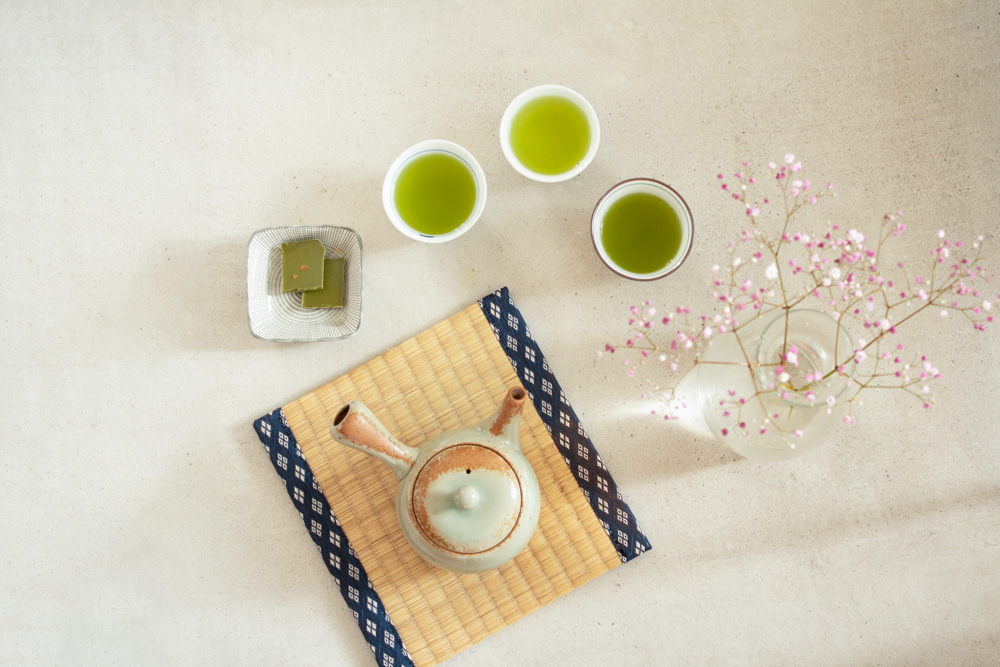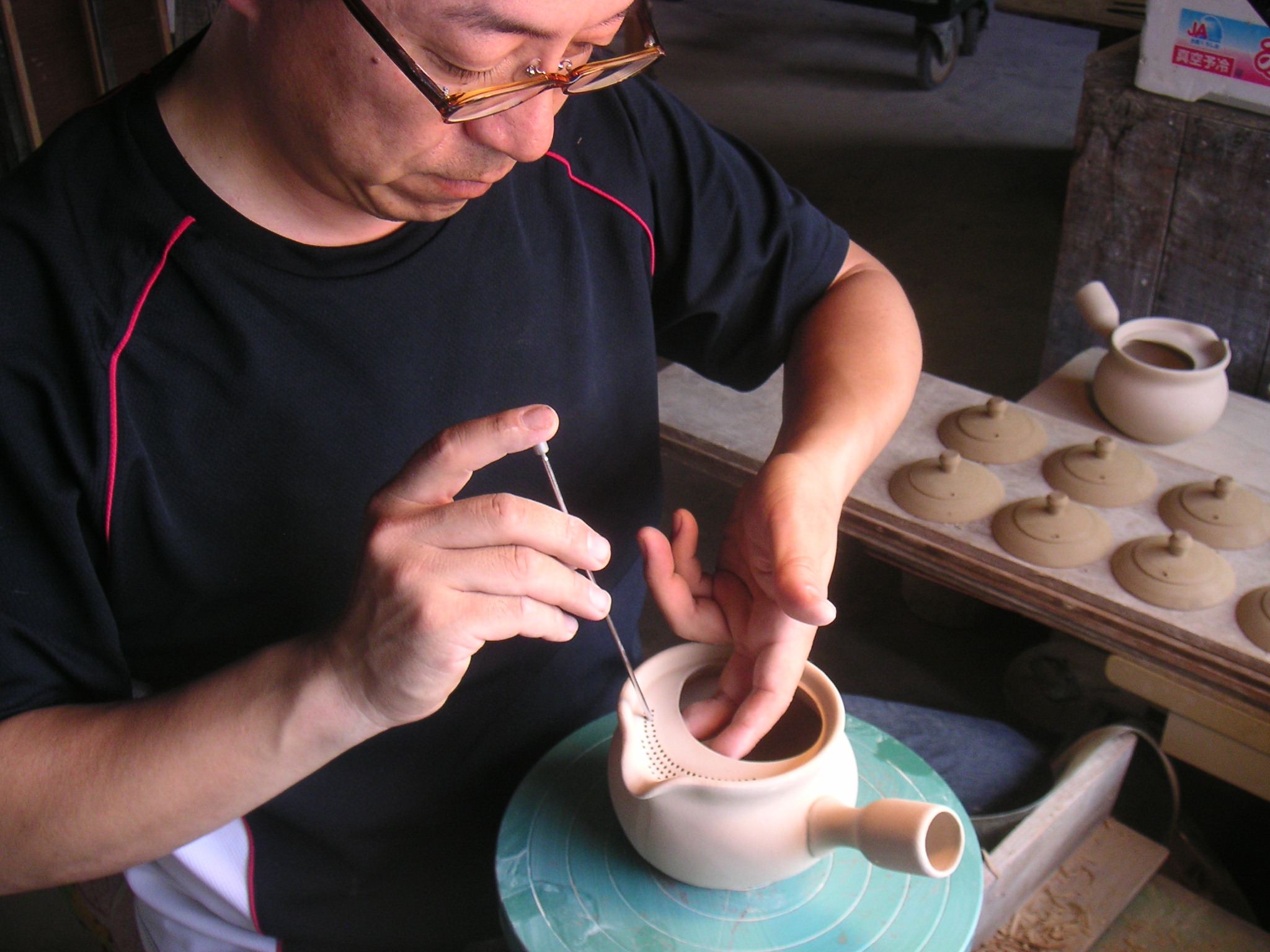



























In the production of this pot, the shape of classic Western teapots was taken up and adapted to the special requirements of green teas. The result is an elegant Banko-Yaki pot that combines Western and Eastern tea traditions.
The tea leaves can unfold freely in the pot, which is quite generous at 480ml, and are retained in the pot by an integrated strainer before the spout during brewing. The leaves remain in the pot and are then simply briefly brewed again with water for further infusions.
Special features.
At Fujiso Manufactory, the holes in the clay strainer in front of the beak-like spout are poked by hand. This skill is still mastered by only a few masters in Japan - there are only 3 artists left who make such sieves in Japan. Clay screens of this type are particularly well suited for slightly larger leaf material. These include medium-strong or only lightly steamed teas such as Gyokuro, Shincha Yakushima, Hojicha, Oolong and other specialties. In the case of intensely steamed tea (fukamushi cha), the fine leaves may get stuck in the holes.
The tall shape of the pot is particularly well suited to teas with a higher infusion temperature (such as benifuuki, hojicha, oolong and kocha) and promotes the development of aroma and fragrance.
The handle and spout are shaped so that the pot fits comfortably in the hand and the tea can be poured without dripping. The notches on the lid ensure a smooth flow when pouring by improving air exchange.
On the outside, the reddish-brown clay typical of the Banko-Yaki style is unglazed, while a light, pale green glaze has been applied to the inside. This glaze was specially developed to facilitate cleaning and to allow the aroma of the prepared teas to develop without external influences and not to settle in the porous clay. Thus, the pot can be used for alternating teas with intense aroma without it lingering on the next tea.
Filling capacity
450ml, for 1-5 persons
The filling quantity of the pot should be chosen so that the tea can be completely distributed to the ready cup(s) and no water remains in the pot between infusions.
The filling quantities are measured to the rim - the actual amount in daily use is slightly smaller.
Deviations.
Please note that the shape, color and size of tea ceramics may vary slightly!
This is especially true for teapots, which are all at least partially handmade.
Cleaning
To clean the teapot after everyday use, simply tap the teapot against your palm to loosen the tea and shake it out. Rinse well with clear water, also through the strainer. If the strainer has become clogged after longer use, you will find instructions here on how to care for and clean your teapot - for undiminished tea enjoyment: Cleaning instructions
Properties
| Origin: | Japan -Yokkaichi |
|---|
0 of 0 reviews
Login
Dazu passt
Ähnliche Artikel
Not available










